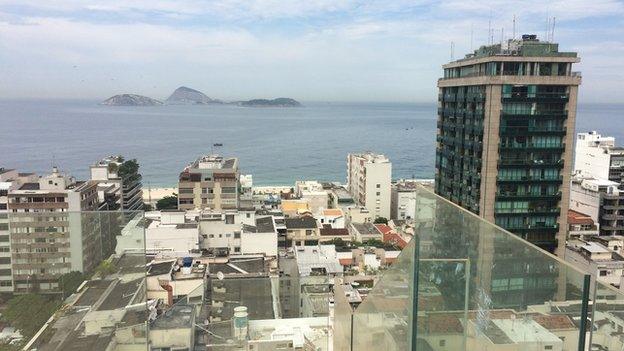Brazil marks anniversary of inflation-busting currency
- Published
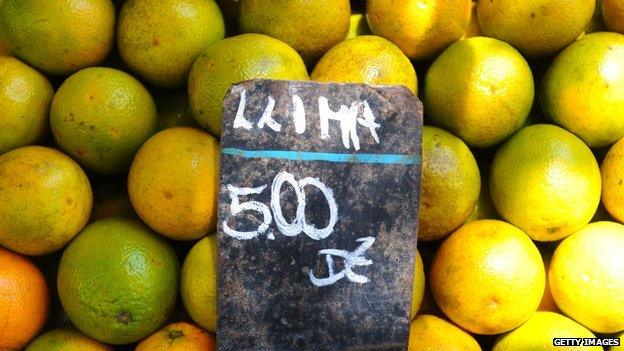
Twenty years ago, after decades of financial turmoil, Brazil introduced its current currency, the real, marking a turning point in the country's fight against hyperinflation.
Many Brazilians still have painful memories of the period in the late 1980s and early 1990s, when people rushed to the supermarkets as soon as they received their salaries, because prices could increase rapidly the following day.
Once a month, families would embark on a shopping expedition worthy of Christmas Eve, and in many homes, large fridges were kept to stock up on food.
And minutes after an increase in petrol prices was announced, cars crowded into filling stations, creating huge snaking queues.
Unpredictable lives
As inflation rose to reach more than 2,000% a year (in 1993), life became totally unpredictable. Planning holidays, weddings, or any major event became almost impossible.
The BBC's Katy Watson asks whether Brazil's Real Plan has worked
Not only because it was difficult to anticipate prices, but also because unorthodox economic plans constantly imposed new currencies and dramatic changes in people's lives.
The most radical of them, the Collor Plan, froze all bank accounts with a balance in excess of US $1,000 in 1991.
"Brazilians who had sold a house, and were about to buy another one, could not go ahead with their purchase," recalls Ione Amorim, an economist at the Brazilian Consumer Defence Institute (Idec).
It is not difficult, then, to understand why the 20th anniversary of the current Brazilian currency, the real, is being widely celebrated in South America's largest country.
The Real was launched on 1 July 1994 - after a decade in which the country's currency had changed five times - and was a turning point in the fight against inflation.
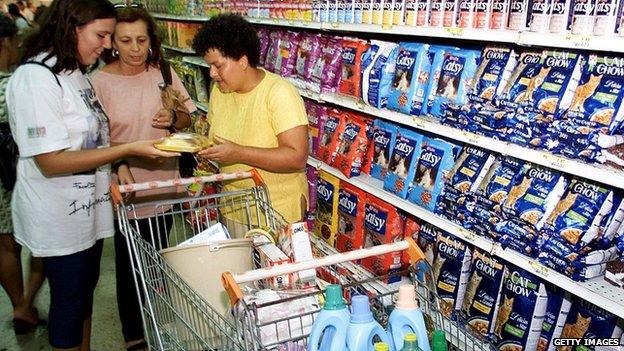
At the height of hyperinflation, Brazilians stocked up on groceries
"Brazilians suddenly became capable of making plans for the future, instead of having to live in the here and now," explains Clemens Nunes, of the Getulio Vargas Foundation.
Better than expected
By 1995, the rate of inflation had already fallen to 22% and in the following year it had gone into single figures.
"At that time, most Brazilians were surprised when results came out much better than people thought," says Persio Arida, one of the architects of the plan which introduced the new currency - known as the Real Plan.
"The real was a watershed for Brazil's economy, putting an end to four decades of escalating prices," agrees economist Marcelo Moura, a professor at Insper Business School.
According to economists, one of the reasons behind the success of the Real Plan was its transparency.
Calming expectations
"All its measures were pre-announced months before they were implemented, to calm expectations," explains Mr Moura.
The first step of the plan was to create a virtual currency, the real unit of value, or URV, of which was roughly set at a par to the US dollar.
All contracts and prices were gradually converted to this new accounting unit, whose value in the old currency - the Cruzeiro Real - was readjusted daily.
Four months later, the real was launched, with the same value as the URV.
"But this was only the monetary strategy underpinning the plan," says Brazilian economist Carlos Braga, professor at the IMD business school in Switzerland.
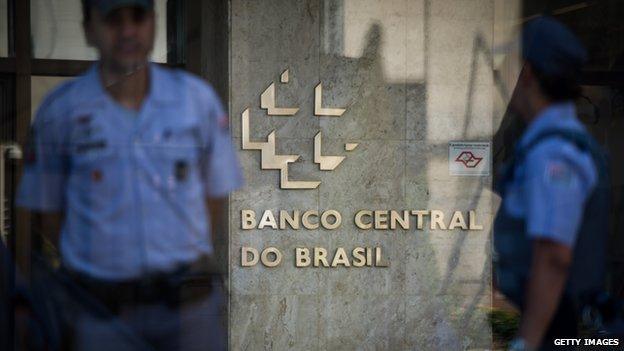
Brazil's central bank wants inflation to settle at about 4.5%
"It was followed by a series of structural reforms, such as new laws imposing fiscal discipline."
Poverty reduction
"As inflation tends to hit the poor hardest, it was also this process that created the basis for the striking poverty reduction which the country experienced during the 2000s," says Mr Nunes.
But the real's anniversary has not been met with universal celebration.
Some economists - including a few linked to the 1994 plan - have used the date to voice concerns about the inflation policy of Brazilian President Dilma Rousseff's government.
Today, inflation hovers at approximately 6% in Brazil. The central bank's target is 4.5%, with a leeway of plus or minus two percentage points.
"Hyperinflation is no longer a threat, but we still have chronic high inflation, which is causing a lot of damage," says Rubens Ricupero, who was Brazil's finance minister during the Real Plan.
"Several unions have taken to the streets this year to ask for wage increases, partly because they are concerned about inflation."
Government expenses
For Persio Arida, the government is too "lenient" with inflation and should reduce its target to 3%, cutting public expenditures to help control prices.
"That would allow the maintenance of low levels of inflation without huge increases on interest rates," he says.
"Fiscal austerity is the right anchor for monetary stability."
The government argues that inflation is perfectly under control, and says many criticisms are politically motivated.
Brazil will have presidential elections in October and many of the real's architects are linked to the opposition.
"The prospects for inflation are positive," Finance Minister Guido Mantega said recently.
"Prices are already falling and they will keep on going down."
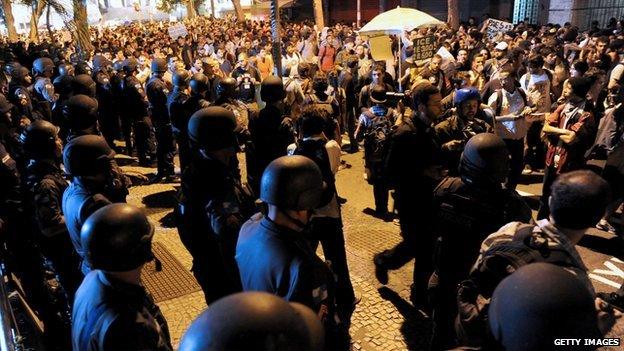
Demonstrators have taken to the streets of Rio, protesting against rising consumer prices
Ballot box discipline
The markets are watching carefully to see if this hope is realised.
But all political groups in Brazil agree that after such a traumatic experience with hyperinflation, public opinion has become one of the main guarantors of stability.
"All government officials and politicians know that if they allow the [inflation] rate to go off the rails, their popularity will suffer," says Mr Arida.
Mr Nunes agrees.
"Inflation now," he says, "is controlled through the ballot box."
- Published30 May 2014
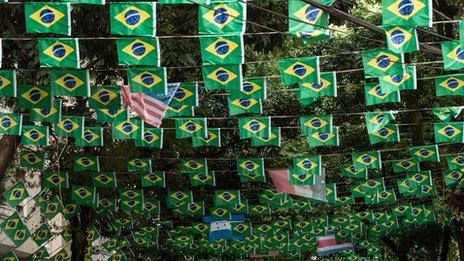
- Published27 October 2010
- Published1 May 2014
